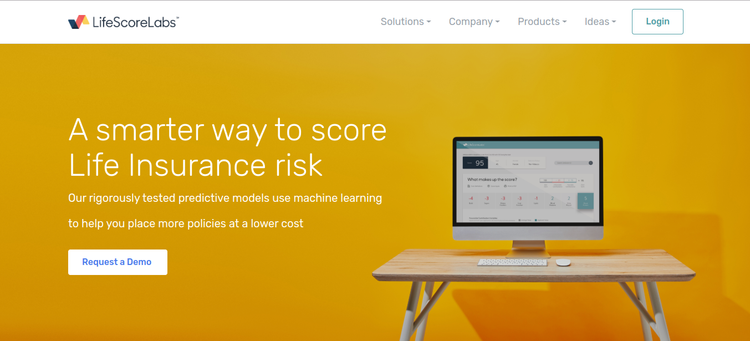The Nanny Diary
I've been running an ad in recent weeks for a live-in nanny for my toddler. It's a part-time gig in exchange for room, board and a small stipend. And it seemed to me it was a nice job for someone enrolled in college.
I've posted the ad in a number of places ... particularly on college campuses near our home in lower Manhattan.
As the resumes have come in, I've been saddened to see that the most common applicant is someone who is about to graduate with a media degree of one kind of another.
I've been saddened. But I have not been surprised.
Long time coming
A year ago this month I wrote what is the most-read post in the history of this blog -- a lengthy piece in which I said that "much of B2B publishing -- weighed down by the twin albatrosses of junk bonds and rising print costs -- has sunk into a death spiral."
In that piece I told the "editors, salespeople and designers of B2B" it was well past the time for them to "walk away from print."
Since writing that piece, I've found myself listening time and time and time again to B2B executives complain that I've overstated the problems in the industry and/or that by writing about how bad things are, I'm actually making things worse.
So look: I think it's beyond silly to suggest that reporting the news actually causes the news. And it would be beyond presumptuous of me to suggest this blog has sufficient influence to make things worse (or better.)
But regardless, I think we can probably all agree at this point that I did not overstate the case -- things were, as I wrote at that time, "awful and getting worse."
Does anyone doubt still doubt this? Is it not clear that B2B has sunk into nearly as much trouble as the newspaper industry?
If so, please consider the news of just the past few hours:
Penton is going to a four-day workweek and cutting pay.
BNP is cutting salaries by 25 percent.
McGraw-Hill's media unit said its revenue and profit have plunged.
Hate to say I told you so, but ...
Another of the most-read posts in the history of this blog was published on Dec. 11, 2007. In it I wrote that I had a sense that "something is about to go wrong" and that 2008 would be "an awful year for B2B publishing."
I said then that "everywhere I go I meet people with revenue targets that seem delusional." And I said that the "lust of investors, the demands for growth, the need to justify ourselves to the people who control the purse strings are pushing us into a new era of preposterousness."
Nearly a year to the day after that, I published what is now the second-most-read post in the history of this blog: a lengthy piece in which I argued that "the B2B industry as we know it is about to collapse."
In that piece, I wrote that not only had most traditional publishers dug themselves into a hole from which it was unlikely they could emerge, but that the new Web-only publishers were also proving to be a major disappointment. Those "Web-native companies are finding themselves unable to assume the core journalistic functions needed by the B2B world," I said. And I repeated a concern I first wrote about two years ago this month that as the Web was growing more competitive, the Web-only publishers were demonstrating "the exact same attitudes, beliefs, work rules, chains of command and silos that I saw in the print-only companies that failed to respond to the Web."
And so, as Web-advertising revenue shrinks, I'm no more surprised to learn, as I did today, that T3i has shut down editorial operations at TelecomWeb, than I am to see that the Baltimore Sun is laying off editors. (Note: T3i's consulting and research units will continue to operate, according to a senior executive at the company.)
Just as I am not surprised that graduating seniors, just days away from receiving their journalism degrees, would be applying by the dozens for a nanny job.
Reasons to be cheerful
Today I'm making another prediction. And many readers of this blog may be surprised by this one:
In B2B, the worst is over. From today forward, the industry begins to recover.
(Please don't misunderstand. I'm not predicting that debt-laden B2B publishers like Penton will survive. I wouldn't say than any more than I would predict that debt-laden radio companies like Clear Channel can survive or that debt-laden newspaper companies like Tribune can survive.
Nope. Those companies are doomed. They'll cut costs as much as possible. They'll sell brands when possible. But their primary purpose now is to come as close as possible to making the investors and the creditors whole. For companies that borrowed heavily, we've reached the end game.)
Let me tell a little story:
On a single day last week I ran into three different journalists I know. Each had been laid off in recent months. And each was sort of killing time in Manhattan. I ran into one outside a diner where I had breakfast. I met another coming out of the place I had lunch. And I met the third on a subway platform.
Normally, seeing three unemployed journalists on a single day would be sort of depressing.
But on that same day I also met with a guy who is launching a new company (and needed some recommendations for journalists he could hire on a contract basis), had a phone conversation with another guy who has launched an agency aimed at increasing online ad revenue, and I deposited a check from a consulting gig I'd finished the week before in which I helped launch a data-driven news product.
And so, for the first time in a long time, there was a balance between the good and the bad news that I experience first hand.
Since then, I've seen a continuing -- albeit a very small -- shift in which good news outweighs the bad.
I'm still getting emails from recently laid off journalists. But I'm also hearing from slightly more folks who are finding contract work to pay the bills.
I still hear a panic in some voices. But I hear confidence in others.
The good news is coming from the places where I expected it would.
In that same post late last year when I said the B2B industry as we know it is about to collapse, I also said B2B would soon be dominated by five types of companies, "all of which exist today, but as much smaller players in the industry."
If you're out of work or worried that you soon will be, I'd urge you to look to those five areas for your future:
- Content marketing
- Data and tech companies
- Small, privately held, debt-free publishers
- Price benchmark publishers
- Entrepreneur networks
The Nanny Indicator
Perhaps I'm being overly optimistic.
Certainly I'm aware that the state of my business and my life are not particularly reliable indicators of the economy or the B2B industry. I've been blessed. I know that. And I am grateful to God, my family and my clients for the support they have offered me. Even as the media industry and the economy have suffered, I have prospered (although my close friends know there were a few very difficult months last year.)
I am aware, in other words, that a guy who is looking to hire a nanny may not be representative of people in the media industry in 2009.
So make of my prediction what you will.
But I believe the worst is over.
I believe the B2B publishing industry as we have known it has already collapsed. It's not coming back. But new B2B publishing models are emerging quickly (and new B2C models will follow soon.)
And, as a result, I believe that should I be looking to hire a nanny again next year, the application pile won't be filled with resumes from student journalists.
tags: journalism, b2b, media, trade press, magazines, newsletters, business media, journalism education, content marketing, brand journalism




